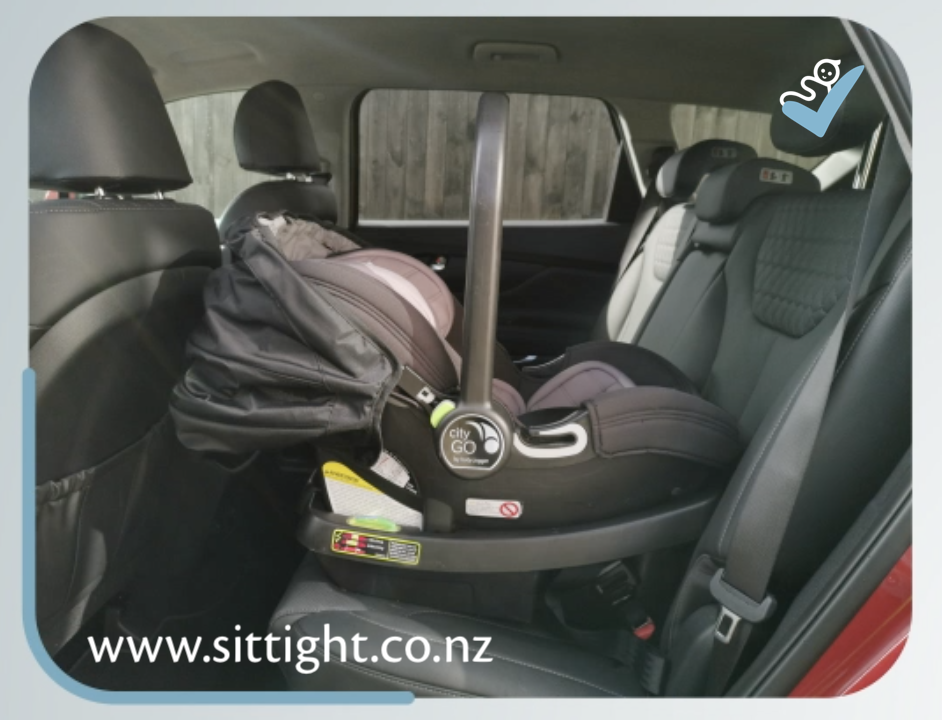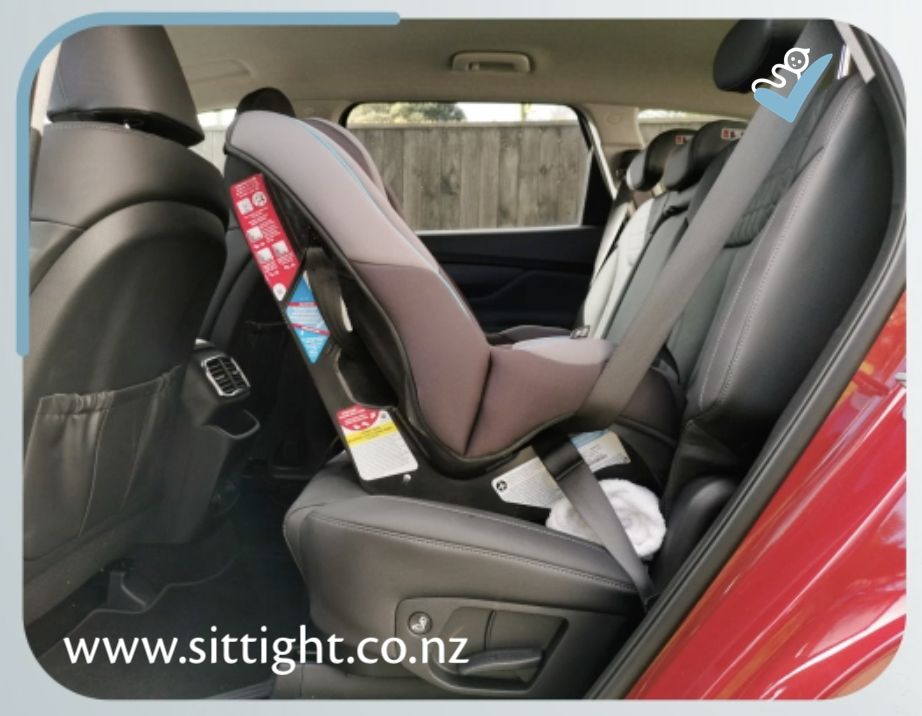Choosing the safest newborn car seat for your new baby is vital. But how do you know which newborn car seat is the safest? Let’s look at what to consider when making this important decision.
Types of Newborn Car Seats
There are two types of child restraints that are appropriate for a newborn:
- A capsule and base – this is the small newborn car seat with a handle that enables you to carry the seat with your baby in it. The preferred option is to use the capsule with a “base”. The base is installed securely in the vehicle and the capsule is simply clipped in and out of it every time you travel with your baby. This removes the need to install the capsule every time it is used making the base generally a safer, and more convenient, way to use the capsule.
- The next-stage seat installed rear-facing. Commonly called a “toddler seat”, this could be a child restraint which is only designed for rear-facing, or more frequently you’ll use a “convertible car seat”. It’s called “convertible” because it “converts” from a rear-facing to a forward-facing seat.
Left: Capsule & base.
Right: Convertible car seat installed rear-facing.
Newborns Travel in a Rear-Facing Position
Both of the newborn car seats above will be installed in a rear-facing position, in other words, they will be facing the back of the vehicle.
Rear-facing is the safest position for an infant or young child to travel in. In a crash, a rear-facing child restraint provides essential support to a child’s head, neck and spine.
NZ car seat law doesn’t specify whether a newborn must travel rear-facing. However, to comply with the law, a child restraint must be used in line with its manufacturer’s instructions. Any car seat designed for a newborn will only allow a baby of this size to travel rear-facing – and this, therefore, is the law.
Features of a Newborn Capsule
A capsule is designed for an infant. For this reason, it is often referred to as a newborn car seat.
A capsule is light and comes with a handle which enables you to lift the capsule out of the vehicle with your baby in it. If your little one is sleeping, being able to move them from the vehicle without disturbing them can seem very convenient. However, it is important not to leave a very young baby in a child restraint of any kind for long periods of time as their position in a car seat can restrict their upper airways.
Whenever possible, you should transfer your baby from a car seat to a flat position as soon as you reach your destination – whether this is a flat buggy, carrycot or, if it’s a safe space, even onto a blanket on the floor.
The space inside a capsule is compact to fit a newborn baby. It will usually have inserts to ensure the smallest baby is secure. These will be removed as a baby grows and needs more room.
Sometimes the parts that come with a capsule are smaller and more suitable for an infant. A good example of this is the chest clip. If the capsule is designed to the US standards it will have a chest clip, a part that clips the harness together across the baby’s chest. In larger car seats, this is often wider than a newborn baby’s chest. As a capsule is designed with a newborn in mind, this part in a capsule will be smaller and narrower.
When Will a Baby Outgrow a Capsule?
The age at which a baby outgrows a capsule will differ from baby to baby. It is a common assumption that a capsule is used until a baby is 6 months old but this is often not the case.
All child restraints, (capsules, convertibles and booster seats), have limits that a child must fit within to be able to use the seat. A child will outgrow a capsule when they reach the upper limits of the restraint, regardless of their age, and this will change depending on the size of the child. As all babies grow at different rates, a large baby will reach the upper limits long before a much smaller baby.
To put this in perspective, a baby in the upper percentile of growth may outgrow a capsule at 4 months old, whereas another child in the lower percentile of growth may comfortably fit a capsule until they are 12-18 months old. When your baby outgrows a capsule will be determined by their individual growth rate.
Features of a Convertible Car Seat
A convertible child restraint is often designed to be used for many years – from infants right through to older children, sometimes up to school age or older.
When used as a newborn car seat, the convertible restraint is installed rear-facing to provide important support to the head, neck and spine.
One of the benefits of using a convertible child restraint as a newborn car seat is that you reduce the risk of leaving your baby in a child restraint for too long. As we referred to above, it is important to transfer a very young baby out of a child restraint at your destination, as the position in the car seat can restrict their upper airways.
Unlike the capsule, which can be removed from the vehicle with your baby in it, the convertible car seat stays permanently in the vehicle and your baby is take in and out of the car seat. By removing the baby from the car seat you are taking them out of the position which can restrict their airways.
Should I Save Money by Choosing a Convertible Car Seat?
Often people ask whether it is necessary to use a capsule. It can seem cheaper and more convenient to skip the capsule and go straight to a rear-facing convertible child restraint.
Choosing to use a convertible child restraint as a newborn car seat can save money in the long term. By having your baby travel in a convertible child restraint from birth you have removed the expense of hiring or purchasing a capsule. Nonetheless, it is worth considering that your new baby will be in a seat which is also designed for an older, larger, heavier child. This means, to accommodate the older children it is also made to carry, the space within it will be larger than a newborn needs. For the same reason, the parts may be larger than what is required for a newborn. The chest clip we mentioned above may be wider than your newborn baby’s chest.
The larger space and size of parts don’t need to be a concern – they have all been tested and approved for use by babies and children that fit within any weight and or height that the child restraint has been designed to carry.
In the end, this consideration of space and size of parts comes down to personal preference. And you can always change your mind – if you have chosen to go with a convertible child restraint as your newborn car seat, but when you see your little one in the seat you decide you would prefer a capsule, you can make the decision to hire or purchase one then. You will eventually use your convertible car seat so it is still a necessary item to have.
Space in the Vehicle
Finally, which of these two newborn car seat options give the most room in the vehicle?
In terms of the space they take up in the vehicle, they will both be very similar.
Any child restraint installed rear-facing is likely to push forward the front seat that it sits behind. For this reason, rear-facing car seats are often installed behind the passenger seat to avoid impacting the legroom of the driver.
Although compact, a capsule installed with a base often takes up as much space as a seemingly larger convertible car seat. If a capsule is used without a base, it is certainly smaller, but this is not the preferred way of using a capsule. When using a base, once the base is installed securely, the capsule simply clips in and out of it. This ensures that the capsule is always installed securely, as the base hasn’t been moved between trips and therefore it stays secure.
Check a Child Restraint in your Vehicle before Deciding
There are benefits to choosing either of these newborn restraint types but it’s important to consider their differences we’ve highlighted above to be sure you are making the right choice for your family.
Finally, the only way to be sure a child restraint is the right one for your family, your vehicle and your baby is to check it in your vehicle before you make a decision.
Always make contact with us at SitTight if you have any questions. And don’t forget to follow us on Facebook or Instagram.

